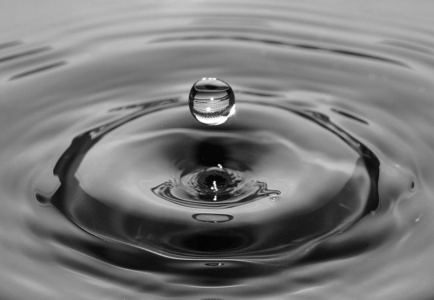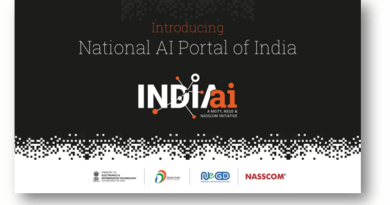Jal Shakti Abhiyan – 2
Context:
Ministry of Jal Shakti Urges All MPs To Participate And Support Jal Shakti Abhiyan – 2
- Seeks Support & Contribution Of MPs In Sensitizing People To Conserve Rainwater During Monsoon Season
Key Highlights Jal Shakti Abhiyan:
- The Abhiyan with the theme– “Catch the Rain where it falls, when it falls’ was launched by Prime Minister on the occasion of world water day – March 22, 2021.
- National Water Mission, under the Ministry of Jal Shakti, is the nodal agency for its implementation.
- The Ministry has coordinated with Ministries of Defence; Rural development; Environment, Forest and Climate Change; Agriculture; Housing and Urban Affairs etc and institutions under Railways, Airports authority of India, CPMFs, all PSUs, Public sector Banks, Universities etc which have vast tracts of lands under them to join hands to ‘Catch the Rain’.
- The campaign aims at tapping rainwater by constructing artificial recharge structures, revitalizing existing ponds and water bodies, creating new water bodies, provisioning check dams, rejuvenating wetlands and rivers before the onset of monsoon. It is also planned to create a data-base of all water bodies in the country by geo tagging them and using this data to create scientific and data-based district level water conservation plans.
- Jal Shakti Abhiyan: Catch The Rain campaign covers all rural and urban areas of all districts of the country, unlike the Jal Shakti Abhiyan-1 of 2019, which covered only 1592 water stressed blocks out of 2836 blocks in 256 districts of the country.
- In the last 2 months after the launch the Abhiyan has made noticeable achievements, despite the severe challenges posed by ongoing COVID-19 pandemic. Ministry of Rural Development has reported completion of construction of 1.64 lakh water conservation and rain water harvesting (RWH) structures, incurring an expenditure of Rs 5,360 crore, while work is in progress on 1.82 lac additional structures. 37,428 traditional structures and existing water bodies have been renovated till date with an expenditure of Rs 2,666 crore and 42,000 additional structures are expected to be rejuvenated shortly.
Jal Shakti Abhiyan-1 of 2019, which covered 1592 water stressed blocks in 256 districts of the country, was a first of its kind campaign where a team of technical experts from CWC and CGWB, led by a Joint secretary rank officer, visited field formations to sensitize local authorities about tapping rainwater. The results were overwhelming as successful interventions were made for rejuvenating existing water bodies and for harvesting roof top rainwater.
Other Initiatives to Conserve Water:
Jal Jeevan Mission (Urban):
The Jal Jeevan Mission-Urban aims to create universal coverage of water supply in all 4,378 statutory towns as well as sewage management in 500 AMRUT cities.
The scheme will be implemented first through signing of MoUs between the Centre, states, and the urban local bodies. The cities will then prepare city water balance plans, recycle/reuse plans and aquifer management plans. The state will vet and approve the development of the project with a baseline assessment.
The ministry will also launch a Technology Sub-Mission, which will house a platform to monitor the outcomes of the scheme. Some funding will be dispersed only when outcomes are assessed.
National Water Mission
The National Water Mission was launched under the National Action Plan for Climate Change (NAPCC) to tackle the threats of global warming. The National Water Mission emphasizes on conservation of water and minimizing the wastage. It also ensures the equitable distribution of water across and within the states through the development and management of integrated water resources. The major goals of the National Water Mission are as follows:
- To reduce and study the impact of climate change on water resources and to provide comprehensive water database in the public domain.
- Promotion of citizen and state actions for water conservation, augmentation and preservation.
- To focus on the vulnerable areas including over-exploited areas and also to increase the water use efficiency by 20%.
- To promote the management of basin level integrated water resources.
National Water Mission
NITI Aayog’s Composite Water Management Index:
The Water Index seeks to enable data-backed water management in the country and promote ‘competitive, cooperative federalism’
Objectives of Index are :
- Establish a clear baseline and benchmark for state level performance on key water indicators
- Uncover and explain how states have progressed on water issues over time, including identifying high performers and under-performers, thereby inculcating a culture of constructive competition among states
- Identify areas for deeper engagement and investment on the part of the states. The CWMI is the country’s first comprehensive and integrated national dataset for water and is a massive achievement in the context of India’s water management. The Index can reinforce the principle of ‘competitive & cooperative federalism’ in the country and enable innovation in the water ecosystem.
Composite Water Management Index
Atal Bhujal Yojana:
1. Atal Bhujal Yojana (ATAL JAL) is a Central Sector Scheme for facilitating sustainable ground water management with an outlay of INR 6000 crore. Out of this, INR 3,000 crore will be as loan from the World Bank and INR 3,000 crore as matching contribution from the Government of India (GoI).
2. The scheme lays emphasis on community participation and demand side interventions for sustainable ground water management in identified water stressed areas in seven States of the country. The scheme also envisages improved source sustainability for Jal Jeevan Mission, positive contribution to the Government’s goal of ‘doubling farmers income’ and inculcating behavioral changes in the community to facilitate optimal water use.
3. Funds under the scheme shall be provided to the states as grants-in-aid. The World Bank financing will be done under a new lending instrument, that is, Program for Results (PforR), wherein funds under the scheme will be disbursed from the World Bank to the GoI for disbursement to participating States based on achievement of pre-agreed results.
4. The scheme is being taken up in 8353 water stressed Gram Panchayats of Haryana, Gujarat, Karnataka, Madhya Pradesh, Maharashtra, Rajasthan and Uttar Pradesh.
5. The Scheme has two components, viz.
i. Institutional Strengthening & Capacity Building component (Rs. 1,400 crore) for strengthening institutional arrangements for ground water governance by facilitating strong data base, scientific approach and community participation in ground water sector in the participating States to enable them sustainably manage their resources.
ii. Incentive Component (Rs. 4,600 crore) for incentivizing the States for achievement of pre-defined results with emphasis on community participation, demand management and convergence among various on-going schemes of the Central and State Governments and consequent improvement in ground water regime.
6. Disbursement Linked Indicators (DLIs) have been identified on the basis of which the incentive amount will be disbursed. The five DLIs considered are
(i) Public disclosure of groundwater data/ information and reports (10% of incentive fund),
(ii) Preparation of Community-led Water Security Plans (15% of incentive fund)
(iii) Public financing of interventions through convergence of on-going schemes (20% of incentive fund)
(iv) Adoption of practices for efficient water use (40% of incentive fund)
(v) Improvement in the rate of decline of groundwater levels (15% of incentive fund).
The incentive funds will be fungible and better performing States / areas will be eligible for additional funds.
Source: PIB



